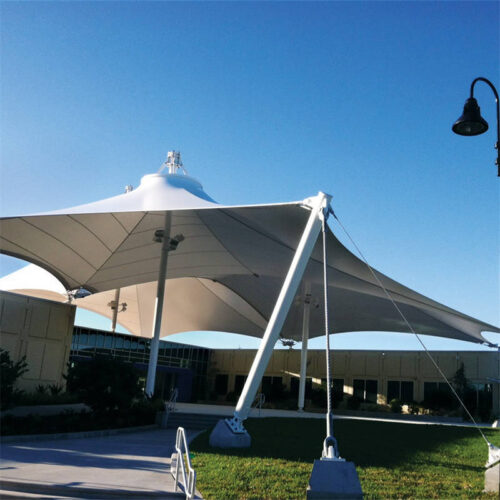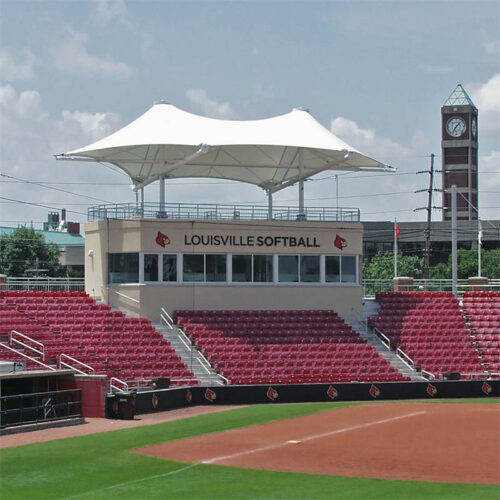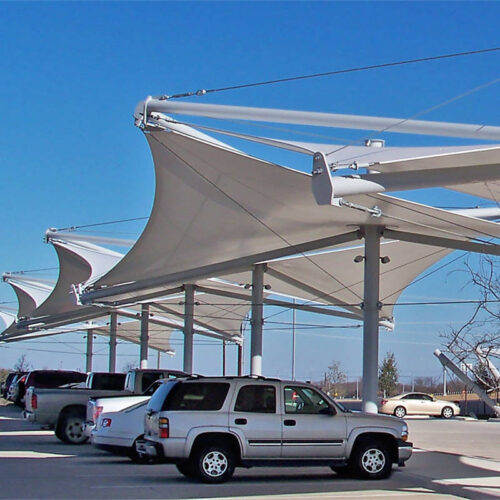What is membrane structure
Membrane structure, also known as tensioned membrane structure, is a structural system composed of building fabrics or membrane materials as the main tensioning body, and supporting components or cables. With its novel and unique architectural design and good stress characteristics, it has become one of the main forms of large-span spatial structures. Membrane structure is a structural system that combines architecture and structure. It is a spatial structural form that combines high-strength flexible film materials with a support system to form a stable curved surface with a certain degree of stiffness and can withstand certain external loads. Its advantages such as free and lightweight design, flame retardancy, easy production, quick installation, ease of use, and safety make it widely used around the world.
This structural form is particularly suitable for large sports venues, population corridors, small buildings, public leisure and entertainment squares, exhibition venues, shopping centers, and other fields.
Characteristics of membrane structure buildings:
Lightweight: Due to the materials and structure used in the membrane structure, it is determined that the membrane structure is a lightweight structure, which is very light compared to other traditional building structures.
Long lifespan: Membrane structure buildings are semi permanent structures. The earliest membrane structure buildings in the world have a history of more than 30 years and are still in use. Its steel skeleton can be used for a long time as long as it is well coated with anti-corrosion coating and maintained in a timely manner. The membrane material used in construction is an advanced composite material with good mechanical properties, high strength, and aging resistance. As long as the structural design is reasonable, the safe service life of membrane structure buildings can reach up to 50 years.
Self cleaning: The surface of membrane materials used in construction has no static electricity and no adsorption force for dust, so they are not easily stained with dust. Even if a little dust falls, it is easily removed by wind and rain. Therefore, membrane structure buildings always appear in our field of vision with bright and clean surfaces.
Large span: It can be built into large-span buildings without intermediate support columns. Some large public activity venues and sports venues require the formation of large open spaces without columns indoors, which presents a major challenge for architects. The use of a membrane structure roof greatly simplifies the problem. Because the membrane per unit area is very light, it greatly reduces the load-bearing capacity of the skeleton. When necessary, a very light roof can be supported by a small pressure difference between indoor and outdoor air.
Good processability: Membrane materials are flexible materials that are difficult to manufacture with rigid materials for complex spatial surfaces. Using membrane structures is much more convenient. Membrane materials can be supported by steel frames or tensioned by rigging to generate various spatial surfaces. The surface generated by the membrane structure is smooth and soft, and can clearly reflect the beauty of the force forming of the membrane.
Short construction period: The production of the skeleton and the processing of the fabric are all carried out in the factory, which greatly shortens the construction period on the construction site and reduces the situation of cross operation and mutual interference among multiple workers on the construction site.
Shopping Cart




